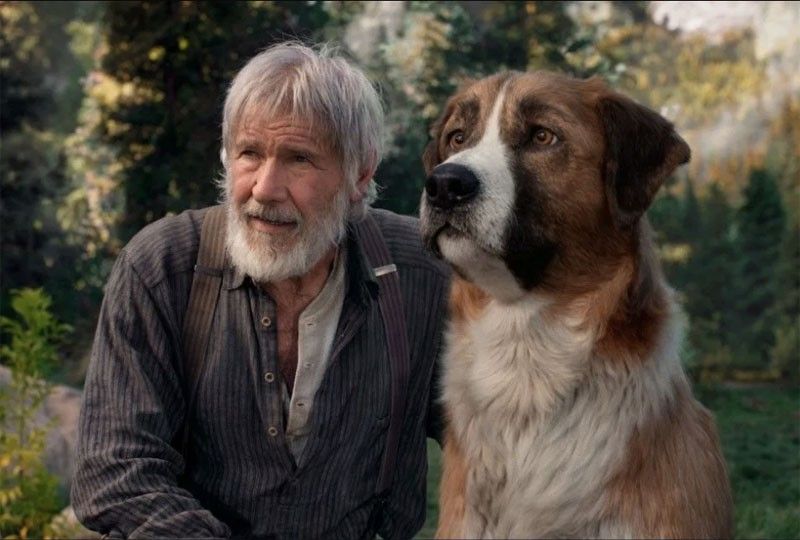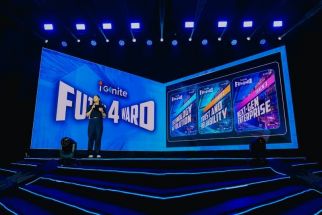Disney’s uncanny valley

In Disney’s Call of the Wild, there’s a certain reassuring quality in hearing Harrison Ford deliver the same kind of flat, growly voiceover he did in the original cut of Blade Runner, the one that Ridley Scott removed for his “Director’s Cut,” presumably because it made Deckard sound too robotic. It’s doubly intriguing when, in Call of the Wild — as in Blade Runner — he’s surrounded by creatures that would never pass a Turing Test. Instead of Replicants, Ford co-acts here with CGI dogs, because that’s something Disney can do now, along with creating a whole veldt of other animals, depending on which live-action remake it is.
Ford plays an Alaskan prospector who’s lost his way after his son died; he lives alone in the wilderness, drinks too much, and is kindly towards Buck, a St. Bernard who’s been shanghaied from his domestic California home and chained to an Alaskan sled dog team sometime during the Klondike Gold Rush of the 1890s.
As Thornton, Ford gives us that trademark quizzical look whenever Buck — an amusing scamp of a CGI dog — does something anthropomorphic, such as catching snowflakes on his tongue or stealing his bottle of whisky to bury in the snow.
Buck is a huge furball of a pampered housedog who does the things cartoon dogs might do — stealing chicken legs, barreling through hallways and nearly knocking over vases and such. When he’s abducted and sold off to a sled dog mail-delivery team in this adaptation of Jack London’s adventure novel, he quickly learns that humans can deliver pain as well as affection and chicken drumsticks. So he rises up with his CGI brothers and sisters, and plots the destruction of his human masters… No, just kidding, this isn’t Terminator, though the sight of so many dogs that touch on human expression, yet shift hazily between something we recognize as living and breathing, and something engineered by CGI artists can sometimes feel a little … uncanny.
But mostly, this is a completely fine addition to Disney’s expanded canon — even if it is produced and released under recent acquisition 20th Century Studio — preserving the humor, spirit of fun (with just a bit of rascally mischief) and cultural tropes we’ve come to expect from Disney entertainment.
It’s very Disney-like to have Bradley Whitford, as head of Buck’s old household, grab the huge dog — wearing a sheepish expression — by the collar and tug him backward out to the porch, where he’ll cause less trouble. It’s good to know that those comic/entertainment instincts are still intact, rooted as they are in Walt Disney’s original vision of Americana.
Buck’s new masters in the wilderness are seasoned mail runners Perrault (Omar Sy) and Francoise (Cara Gee), and they draw out the kinder elements of Buck, while Spitz, the mean German Shepard who heads the pack, teaches Buck the pecking order and forces him to find his Inner Wolf and take control of his situation. Of course, there’s also a human villain, played by evil gold prospector Dan Stevens, to liven things up.
In many ways, Call of the Wild could have been made in the 1950s for The Wonderful World of Disney instead of today, with very little changed; but back then, it would have starred living, breathing dogs, not computer-engineered canines.
The difference now is that Buck is allowed to do things dogs could never actually do in real life, such as blowing on a harmonica. And while, in Disney capers past, an actual living, breathing dog might have capably filled Buck’s role, now we expect our screen dogs to be super dogs: to be capable of tugging our hearts and tickling our ribs, while exhibiting expert comic timing, the likes of which Disney’s best animators once conjured up with pencils and paintbrushes in years past.
The real Turing Test might be whether Buck’s forlorn expression at the end of the movie causes audiences to bust out crying. Can we be moved to tears by a CGI St. Bernard? Is it live, or is it Memorex? See for yourself.
















